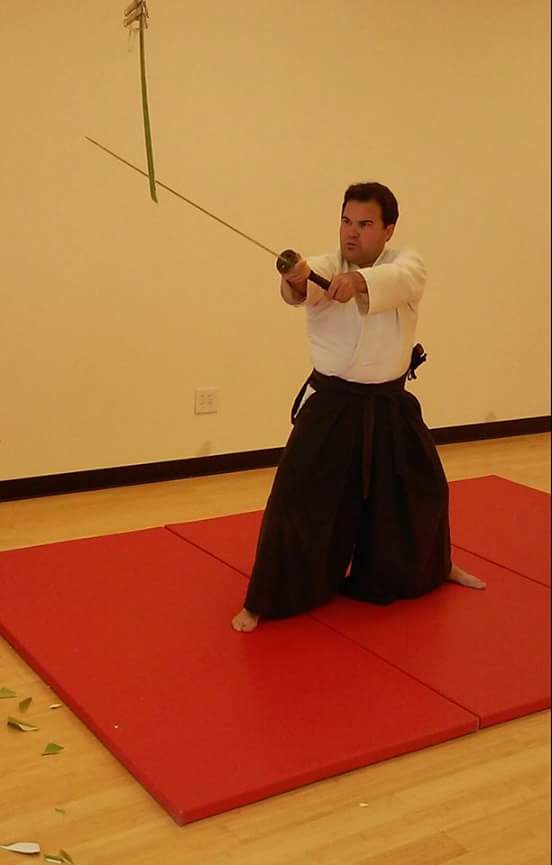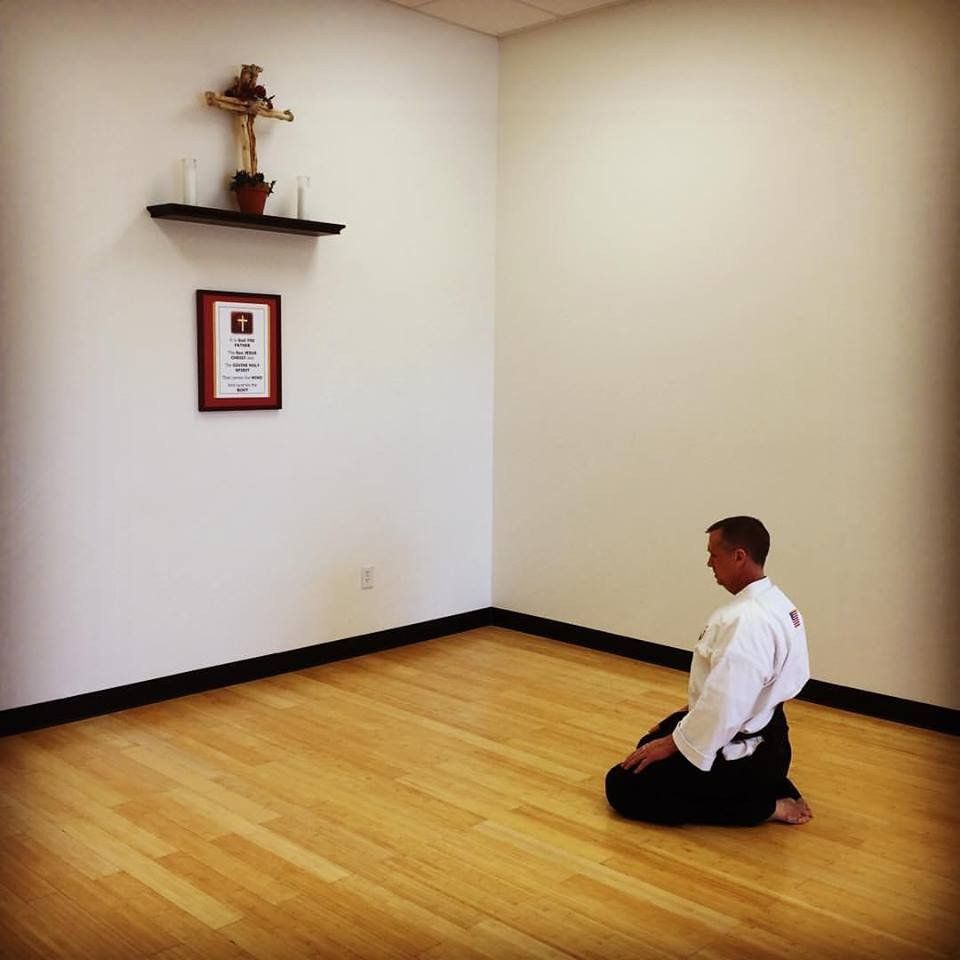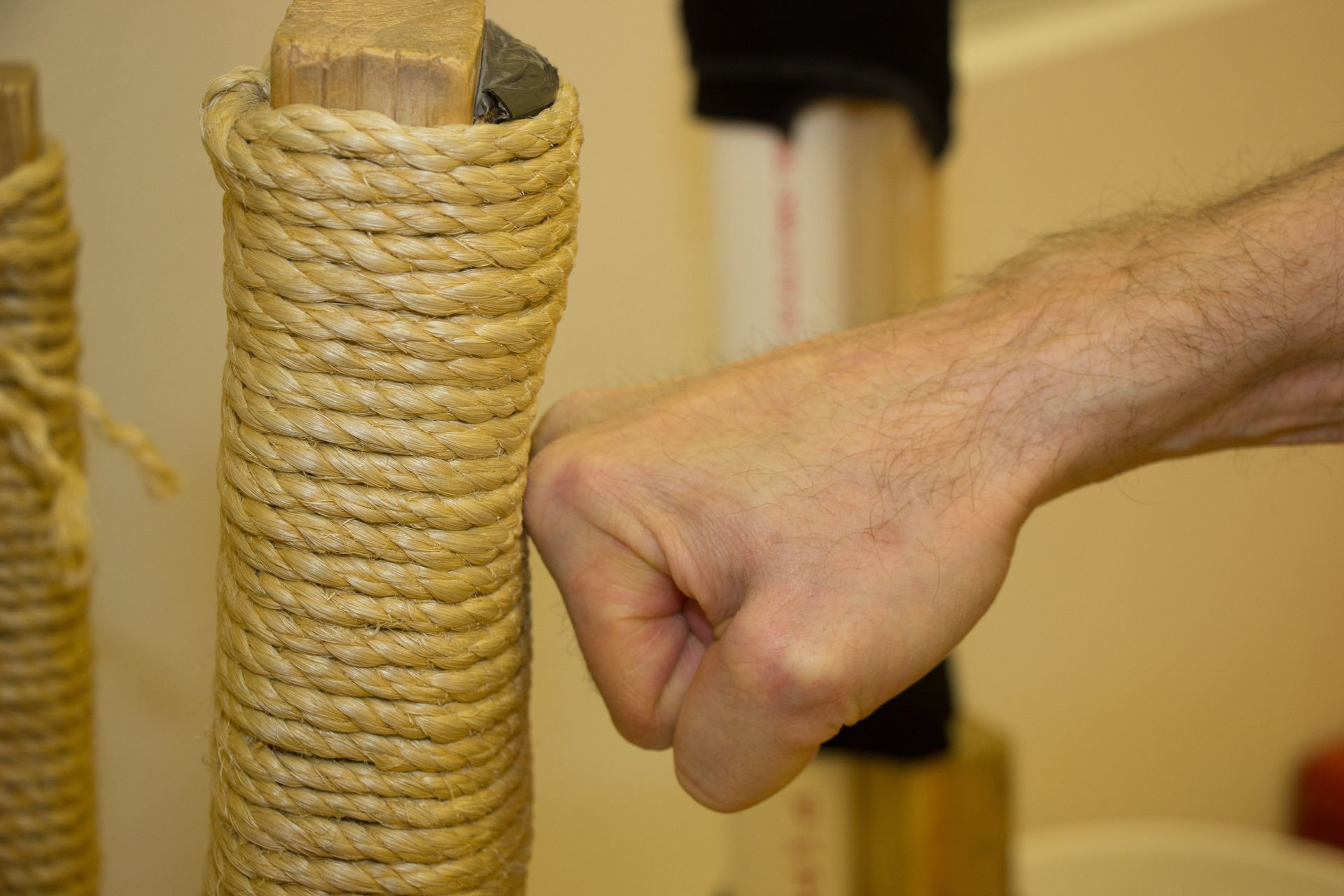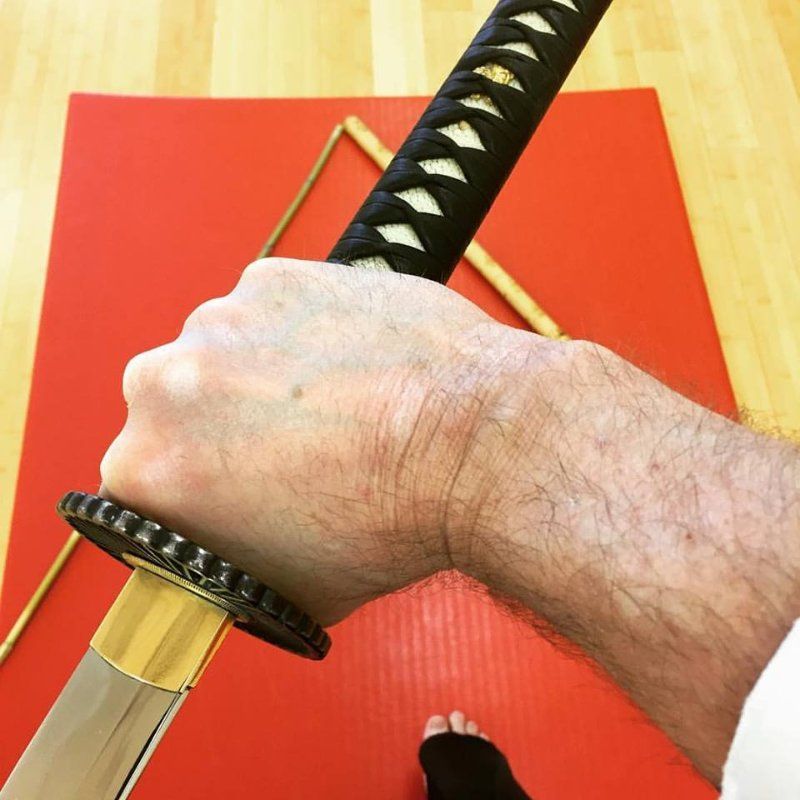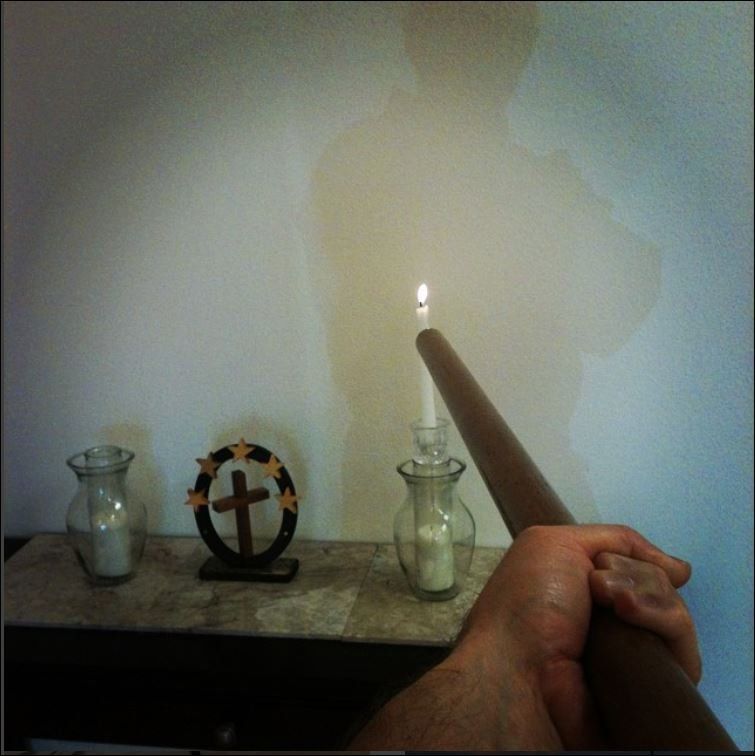BLOG
TE NO OUCHI: Katana Grip
Chris Lopez • October 8, 2018
TE NO UCHI: Gripping the katana
In Iaido and kumitachi, gripping the sword is obviously a vital component in its usage. However, this is also a common mistake, which can often result in poor form and strain on the body as a result. This is why proper tenouchi is very important during this practice.
When gripping the tsuka (hilt) the student should start with the right hand closing the little finger upon it, then close the ring and middle fingers following. The thumb and middle finger should touch; I personally like to think of it as you and your spouse/significant other: never separate. The index finger plants on top of that union, like "putting God on top of it."
Upon completion of the grip, there should be at least an inch between the koko (skin webbing between thumb and index finger) and the sword's tsuba (guard). The same process should be applied to the left hand at the base of the tsuka. The little finger should be curled around the edge of the kashira (sword pommel).
Upon completion of tenouchi, all pressure should be at the thumbs and little fingers when the sword is in use. This pressure should also be applied when cutting. While doing so, the sword should initially be raised outwards, like casting a fishing pole.
As it completes its cutting arc, the student should lightly twist the hands on the grip like wringing water out of a towel (with the thumbs pushing inwards and remaining fingers pulling outwards). This being done, the cuts will be very effective, and the sword's blade will make a "whoosh" sound each time regardless of whether or not a bo-hi (groove) is present in it. It is also important for the student to remember to have good posture by keeping the back straight during each cut in both kata and tameshigiri (test cutting). Leaning into the cuts is not only bad form, but for the samurai in feudal Japan, it left open an attack of opportunity from his opponent.
By having proper grip and good posture in sword practice, the student will not only make excellent progress in the technique but also employ and maintain safety in the dojo.
When gripping the tsuka (hilt) the student should start with the right hand closing the little finger upon it, then close the ring and middle fingers following. The thumb and middle finger should touch; I personally like to think of it as you and your spouse/significant other: never separate. The index finger plants on top of that union, like "putting God on top of it."
Upon completion of the grip, there should be at least an inch between the koko (skin webbing between thumb and index finger) and the sword's tsuba (guard). The same process should be applied to the left hand at the base of the tsuka. The little finger should be curled around the edge of the kashira (sword pommel).
Upon completion of tenouchi, all pressure should be at the thumbs and little fingers when the sword is in use. This pressure should also be applied when cutting. While doing so, the sword should initially be raised outwards, like casting a fishing pole.
As it completes its cutting arc, the student should lightly twist the hands on the grip like wringing water out of a towel (with the thumbs pushing inwards and remaining fingers pulling outwards). This being done, the cuts will be very effective, and the sword's blade will make a "whoosh" sound each time regardless of whether or not a bo-hi (groove) is present in it. It is also important for the student to remember to have good posture by keeping the back straight during each cut in both kata and tameshigiri (test cutting). Leaning into the cuts is not only bad form, but for the samurai in feudal Japan, it left open an attack of opportunity from his opponent.
By having proper grip and good posture in sword practice, the student will not only make excellent progress in the technique but also employ and maintain safety in the dojo.

